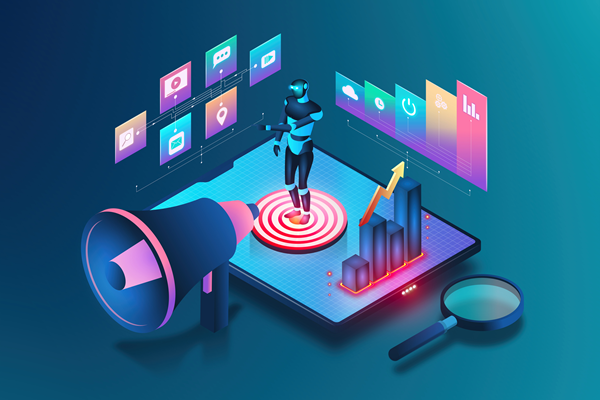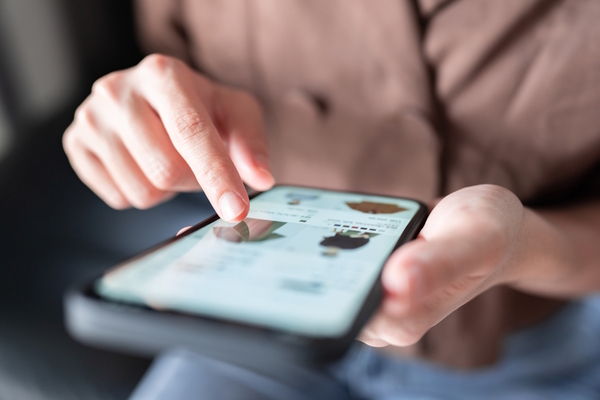The rise and rise of digital networking

No more business cards? Peter Harris at Pipedrive charts the rise of digital networking
You don’t have to be a salesperson to remember the humble - or sometimes fancy - business card, and how introductions, networking, and dealmaking have hugely changed in a very short space of time. For most people, their business cards are likely to remain in a drawer while they network more often online.
National Salesperson Day, every December 6, is one of those moments that most people don’t mark, but still serves as a catalyst for some parts of industry. And all of us, at some point, are required to be salespeople of some sort as part of everyday business - so it’s a good moment to talk about selling yourself.
According to Gartner, 80% of B2B sales interactions are expected to happen digitally, so understanding how to be visible and approachable online, and how to network effectively, is essential.
Taking tips from the experts in sales and marketing is smart: Online, you’re selling yourself, your company, and its services. You become a part of the brand, and you want your connections to trust and like you for your own current and future career as well as what you can bring to the business right now.
Make a home online, furnish it, live there
The most obvious tool is LinkedIn, the primary place for business professionals to show off their availability, success, and professional status. It’s a scaling platform, with figures showing increasing growth and engagement.
At a minimum, LinkedIn, and any other specialist industry platforms, should be a home base where you can be found, you can be associated with your brand, and where your skills, expertise, and success can be evaluated. That means posting with some regularity, and getting past any introversion or humility to regularly share some thoughts on the industry, or otherwise show off that you are a human being with critical thinking skills.
A profile that lacks any content or detail, or one that doesn’t show a history of engagement, doesn’t inspire confidence or provide much insight into who you are or how seriously to take you. Your profile online, on whatever platforms are right for you, should be professional, but not a completely masked version of you. The word used for the result you want is ‘authentic’.
The reputable sales person sells nothing that isn’t true, and you shouldn’t pass yourself off as someone you are not. It’s not the right thing to do, and it will trip you up when you’re trying to build genuine connections over the long-term.
Visibility is key. You may advertise your brand, but it would raise eyebrows to devote ad spend for yourself. It operates differently for your personal brand. Effectively, you gain more equity in your personal brand from what you do. You have to set yourself to be as visible as you’re comfortable being, and you need to participate meaningfully where it makes sense to.
That can be off-line, on other platforms, and even in closed rooms. You just need to promote and share your participation, success, or learnings in the right places. You must encourage conversations and know how and when you can link what you say to your goals or company messaging.
It’s a delicate dance. Authenticity and audacity. Promotion but not pushiness. One thing that no one can tell you is exactly what mix is right for you. Sharing is good, questioning is good, and some mix that leads to meaningful conversations is great.
Was the business card any easier?
A real business card is still a gesture of professionalism and a way to show respect - even if nine in ten are thrown away within a week, according to Adobe. It meant doing things in person, which while nerve-wracking for some, was a lot more clear cut with more immediately measurable outcomes.
But now, connecting with a new contact online can be a respectful introduction or a follow-up to an initial interaction. Either way, it shows how one values the relationship and that you expect it to last.
Relationships that begin online start off on a level of shared understanding and agreement: This will be a professional relationship with an expected level of information sharing and course. All this, and there’s less pressure than in a face-to-face situation where the person opposite you may be judgemental, or at least you may be afraid of that.
One issue with the ‘real world’ where we used to meet, is that it was unpredictable. COVID showed that dramatically. But equally, a missed train or spilled coffee could throw a spanner into the workings of a connection. Digital is much more reliable and predictable.
And, for those more traditional industries or cultures where the exchange of something physical is important, there are digital solutions too. A quality CRM app can scan and import data straight from a business card. Or QR codes, NFC and Bluetooth all offer solutions for information sharing so that data can be saved while people get to know each other the old-fashioned way.
Make use of the right tool and situation
In vivo or in vitro, in the physical world or online, the most important thing is that critical thinking and research are brought together: knowing what you are able to deliver, what the other party needs and expects, and how to read their signals.
That’s all very core to building a connection online, off-line, or anywhere you choose. Some skills never lose their lustre even when the way we present them transforms.
Peter Harris is COO at Pipedrive
Main image courtesy of iStockPhoto.com and TAGSTOCK1

Business Reporter Team
Most Viewed
Winston House, 3rd Floor, Units 306-309, 2-4 Dollis Park, London, N3 1HF
23-29 Hendon Lane, London, N3 1RT
020 8349 4363
© 2025, Lyonsdown Limited. Business Reporter® is a registered trademark of Lyonsdown Ltd. VAT registration number: 830519543





